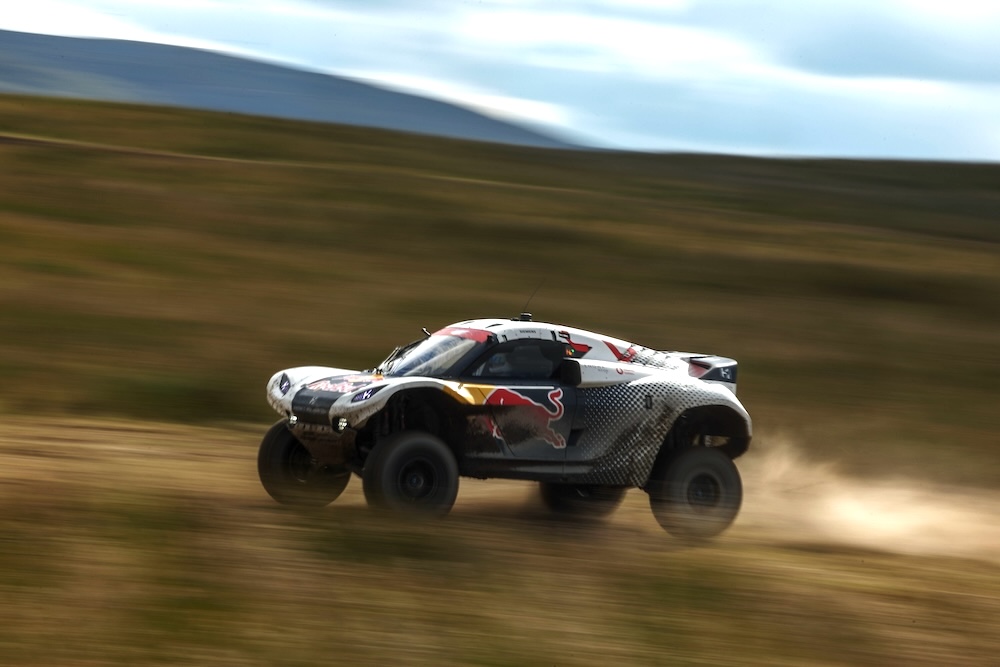Extreme H will be an “an evolution rather than a revolution,” according to the series’ managing director Ali Russell.
The battery-powered Extreme E series will become the world’s first hydrogen-powered racing series next year, with the introduction of the new Pioneer 25 race car. But while a new name and new power source are grabbing headlines, the championship — which has run since 2021 — is regarding it as a continuation of what it’s been doing already rather than an entirely clean slate.
“I like to see this as an evolution rather than a revolution,” Russell told RACER. “We’re not ripping [up] what we’ve got here — this is a really good platform. The teams, the drivers, the locations, the partners, we’ve got an absolutely first-class series here and I think what we’re doing is moving into a parallel mobility solution and I think that allows us to be first.”
The upcoming car — which was tested in race-like conditions for the first time in Scotland — takes on lessons learned over the last four seasons, not just from a technical standpoint, but from a sporting perspective, too.
[lawrence-auto-related count=3 category=5858]
“What I like about the hydrogen car is that it is a 2.0,” Russell said. “If you look at generations of development, we’ve been able to take all of the knowledge that we’ve gained — because when we developed the Extreme E car, we didn’t know what teams would be involved, what drivers would be involved, we didn’t know about the equality split in terms of the drivers,.
“If you remember the first race, it was over a much longer course so ultimately we designed a car without knowing where it was going to be racing. This is very different — we know where we’ll be racing, we know the style, we’ve refined it, we’re really really happy with the sporting format. I think multi-car racing is super-exciting.”

Despite the talk of continuation, there is no illusion about the task the series still faces but Russell points to the experience of overcoming Formula E doubters in that series’ early days as something to be inspired by.
“When we started Formula E, everyone thought it was Scalextric [slot cars] — there were concerns over the electrocution of drivers or fires that would start, and also how would people feel about a quiet racing series? It’s now one of the most successful series on the planet, so I think we’ve been able to break down barriers before, as a group of individuals,” he says.
“I think in terms of moving forward, there are concerns. People look at hydrogen and there is a lot of negatives around hydrogen and what we want to do is dispel that and show first of all that it’s a safe platform, and secondly that it has performance, it has better autonomy, and that it can be exciting to watch because if the entertainment is good. We’ll be able to progress so much further in terms of the messages and the innovation that we create through the series.”
The series has made additional steps towards its future beyond testing its new car. Over the Hydro X Prix weekend, 80 percent of the paddock’s power came from green hydrogen. 700kg of green hydrogen produced 11 Megawatt-hours (MWh) of power to support car charging, catering and event control power on-site. That was enough to power 1,000 homes in the UK for a single day, or charge the electric vehicles at the race site — including the race cars and vehicles used to travel to and from the location — more than 350 times.
So far one of the eight current Extreme E teams — SUN Minimeal — has publicly confirmed its commitment to Extreme H, although RACER understands there are others that have already committed. Russell says the expectation is to return to 10 teams next year while there is a provision for that number to increase further.
“Absolutely none of the teams have said that they are out, so all of the teams are interested,” he confirmed. “But of course what they’re going through is a slight change in partners that are interested, so they’re lining up their finances to be involved in the series. We see very much a consistent number of teams, a consistent number of drivers, and actually we’re hoping to bring in more teams, so watch this space.
“We have written into our contract with the teams that we can go up to 12, but we’re producing 10 cars at this moment in time so we’re ready for 10 teams to take the grid next year.”
